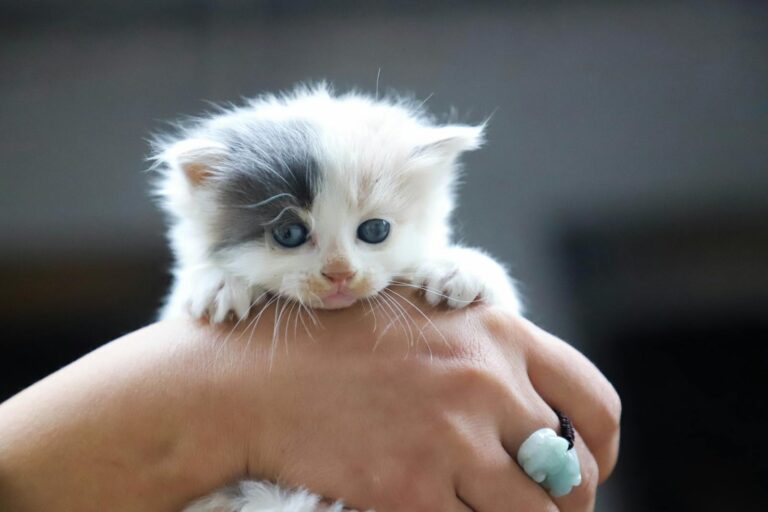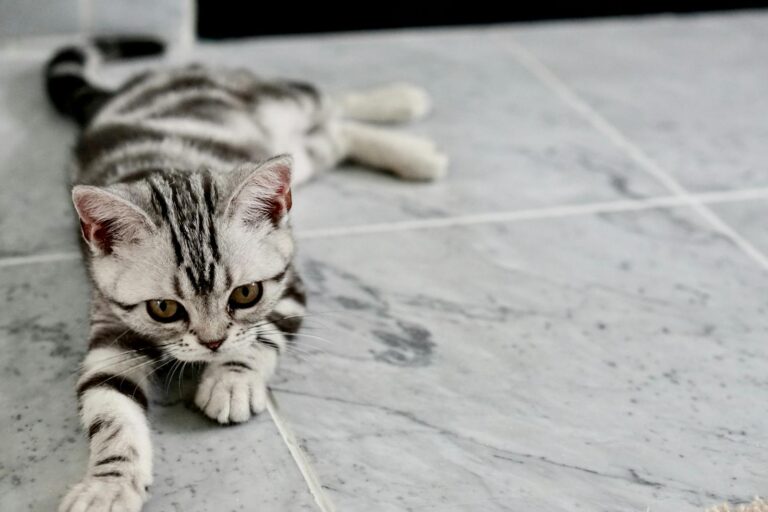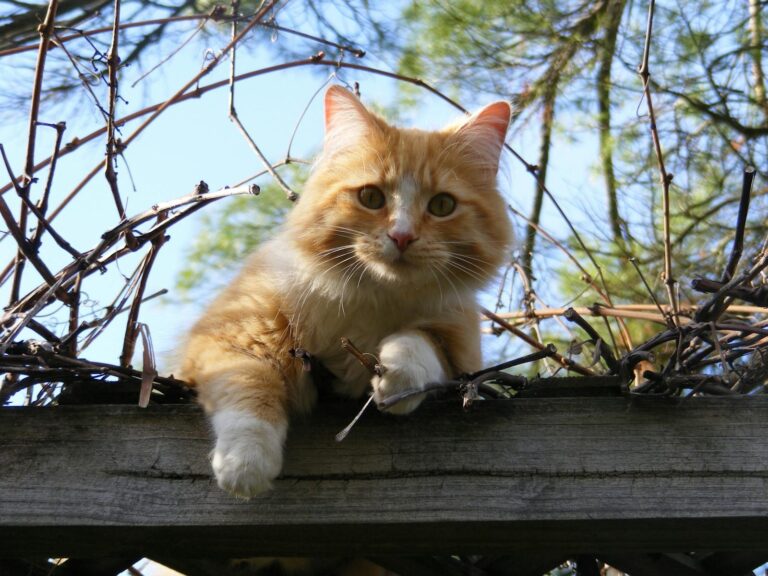First-Time Cat Owner? Here’s What You Actually Need to Know for a Purr-fect Transition
Are you a First-Time Cat Owner? Here’s what you actually need to ensure that you and your feline companion find harmony in your home. Owning a cat can be an incredibly rewarding experience, filled with joy, companionship, and even some challenges. Understanding the essentials will help you make informed decisions that contribute to your new furry friend’s well-being and happiness.
Essential Supplies for New Cat Owners: A Comprehensive Guide
As a new cat owner, one of the first steps to ensuring a smooth introduction for your cat is gathering the essential supplies. From food to litter boxes, having the right items on hand can set you up for success right from the start. Let’s break down the must-have supplies for your new feline friend.
Food and Water Bowls
Food and water bowls may seem simple, but choosing the right ones can significantly impact your cat’s health and happiness.
- Material Matters: Look for non-toxic materials like ceramic or stainless steel. These are easy to clean and less likely to harbor bacteria compared to plastic.
- Size and Shape: Ensure the bowls are appropriately sized for your cat. Shallow dishes often work best for cats who dislike whisker fatigue—a condition where their sensitive whiskers touch the sides of deep bowls, causing discomfort.
- Stable Base: Consider weighted bowls or those with rubber bottoms to prevent them from sliding around while your cat eats or drinks.
Having dedicated food and water bowls creates a normal eating routine and promotes hydration, which is essential for your cat’s overall well-being.
Litter Box Essentials
A litter box is not just a functional item; it’s a critical part of your cat’s life.
- Type of Litter Box: Choose between covered or uncovered boxes based on your cat’s preference. Some cats prefer more privacy, while others enjoy open spaces.
- Litter Options: There are various types of cat litter available, such as clay-based, clumping, or natural biodegradable options. Experimenting with different types can help you find what your cat prefers.
- Maintenance Tools: Invest in a good scoop and a mat to catch litter spills. Regular cleaning of the litter box is crucial to avoid any aversion your cat may develop towards using it.
Setting up a comfortable and clean litter box area is vital for your cat’s comfort and hygiene.
Cat Bed and Resting Areas
Every cat needs a cozy spot to curl up and relax.
- Variety of Options: Consider different types of beds, cozy nooks, or blankets. Cats love to have choices when it comes to where they rest.
- Location Matters: Place beds in quiet areas away from household traffic or noise. Cats value their nap time and appreciate peace during this time.
- Washing: Ensure the bedding is machine washable since cats may shed hair or track litter into their resting spots.
Creating a snug retreat will give your cat a sense of security and comfort throughout their day.
Toys and Enrichment
Toys are not just for fun; they also provide mental stimulation and exercise, which are crucial for your cat’s health.
- Types of Toys: Interactive toys, such as feather wands or laser pointers, can encourage play and bonding. Puzzle feeders can stimulate your cat mentally and help prevent boredom.
- Rotation: To keep things interesting, rotate your cat’s toys regularly. This can rekindle interest and excitement in items they may have initially grown bored with.
- Safety First: Always check toys for loose parts or sharp edges that could harm your cat. Avoid small items that can be swallowed or choked on.
By providing your cat with engaging toys, you enable them to fulfill their instinctual behaviors, promote physical health, and strengthen your bond.
Preparing Your Home for a Feline Friend: First-Time Owner Checklist
Preparing your home for a new feline companion involves more than just buying supplies; it means creating an environment that caters to their instincts and ensures their safety. Here’s how to get started.
Cat-Proofing Your Space
Before bringing your new cat home, it’s essential to ensure that your environment is safe.
- Hazard Removal: Look for dangling cords, toxic houseplants, and small objects that could be swallowed. Store away any chemicals or cleaning products that could pose a threat.
- Windows and Balconies: Make sure windows and balconies are secure. Cats are curious creatures, and you want to prevent any accidental falls.
- Hide Electrical Cords: Consider using cord covers or taping cords to baseboards to reduce the risk of chewing or entanglement.
Creating a safe and secure environment will not only protect your cat but also give you peace of mind as they explore their new home.
Designating a Space for Your Cat
Establishing a designated area for your cat helps them acclimatize to their new surroundings.
- Safe Zone: Create a “safe zone” where your cat can retreat if they feel overwhelmed. This space should include their bed, litter box, food, and water.
- Gradual Exploration: Allow your cat to explore your home gradually. Start with one room and let them gain confidence before introducing more spaces.
- Vertical Space: Cats love to climb and perch up high. Consider adding shelves or cat trees to create vertical space that gives them an opportunity to observe their domain safely.
Designating a specific area for your cat will ease their transition and help them feel at home faster.
Socializing and Bonding Time
Socialization is key to helping your new cat adjust.
- Gentle Interactions: Spend time sitting quietly with your new cat, allowing them to come to you. Forcing interaction can heighten their anxiety.
- Play Sessions: Encourage bonding through playtime. Use interactive toys to engage them and build trust between you.
- Respect Boundaries: Pay attention to your cat’s body language. If they seem stressed or withdraw, respect their space and give them time.
Building a trusting relationship with your new cat will enhance your experience as a pet owner and deepen your connection.
Beyond the Basics: Unspoken Needs of Your New Cat
While you may have gathered the basic supplies, there are often overlooked aspects that are equally important for your cat’s emotional and physical health.
Mental Stimulation and Environmental Enrichment
Cats thrive on mental stimulation and variety in their environment.
- Interactive Feeders: These devices can challenge your cat’s problem-solving skills while also slowing down their eating.
- Window Perches: Providing a perch near a window allows your cat to watch birds and other outside activities, offering them entertainment.
- Varied Textures: Incorporate different textures in their environment—scratching posts, soft blankets, and climbing structures stimulate their senses and maintain their interest.
An enriching environment will prevent boredom and help alleviate behavioral issues related to inactivity.
Routine Vet Visits and Health Checks
Regular veterinary care is paramount for your cat’s long-term health.
- Initial Check-Up: Schedule a vet visit soon after adoption to assess your cat’s health, vaccination status, and discuss preventive care options.
- Routine Care: Establish a routine for regular vaccinations, dental care, and parasite prevention. Cats benefit from annual check-ups to catch any issues early.
- Health Monitoring: Keep an eye on changes in behavior or appetite, as these can indicate health problems. Being proactive about their health makes all the difference.
Investing in their healthcare will enhance your cat’s quality of life and longevity.
Understanding Feline Behavior
Understanding cat behavior can bridge the gap between you and your new pet.
- Kneading and Purring: Familiarize yourself with signs of affection, such as kneading or purring, which indicate contentment.
- Hiding and Retreating: It’s common for cats to seek out hiding places when feeling anxious. Respect their need for solitude when required.
- Play and Hunting Instincts: Recognize that many play behaviors are rooted in hunting instincts. Engaging in the right play can help fulfill these primal urges.
Understanding the nuances of feline behavior can enhance your relationship and help you respond to their needs effectively.
Budget-Friendly Cat Care: Essential Items Without Breaking the Bank
Cat ownership doesn’t have to be financially overwhelming. There are numerous ways to care for your cat while staying within your budget.
DIY Solutions for Cat Supplies
Some essential cat supplies can easily be made at home.
- Litter Alternatives: You can use shredded newspaper or sawdust as budget-friendly alternatives to commercial cat litter in a pinch.
- Homemade Toys: Simple toys like crumpled paper balls, cardboard boxes, or string can provide endless entertainment without costing a fortune.
- Scratching Posts: Create your own scratching post by wrapping sisal rope around a sturdy piece of wood or cardboard.
Using DIY ideas not only saves money but also adds a personal touch to your cat’s belongings.
Thrift and Second-Hand Shopping
Many essential items can be found at thrift stores or online marketplaces.
- Gently Used Items: Look for second-hand cat carriers, beds, or toys that are still in good condition. Just be sure to clean them thoroughly before use.
- Community Resources: Check local shelters or community groups for free or low-cost cat supplies. They often provide resources for first-time cat owners.
- Bartering and Exchanges: Engage with fellow cat owners in your local area to swap items or supplies you no longer need.
Exploring budget-friendly options fosters creativity and resourcefulness as a pet owner.
Cost-Effective Veterinary Care
Routine veterinary care is essential, but it can be managed affordably.
- Preventive Care Plans: Many veterinary clinics offer packages that bundle vaccines and services at a reduced rate.
- Pet Insurance: Investing in pet insurance can save you money in emergencies, providing peace of mind for unexpected health issues.
- Low-Cost Clinics: Research local low-cost clinics or wellness programs that offer discounted veterinary services for pet owners in need.
Taking control of your pet’s healthcare expenses ensures they receive the necessary care without financial strain.
From Kitten to Cat: Adjusting Your Approach Over Time
Your approach will inevitably change as your cat transitions from a playful kitten to a mature adult cat. Understanding these stages is essential for fostering healthy habits and relationships.
Kittens vs. Adult Cats
Recognizing the differences between kittens and adult cats can help you cater to their evolving needs.
- Energy Levels: Kittens are typically more energetic, requiring more playtime and social interaction. Adult cats may become more sedentary and prefer quiet relaxation.
- Nutritional Needs: Kittens require a specific diet designed for growth, while adult cats need food formulated for maintenance.
- Behavioral Changes: Kittens often exhibit more playful and mischievous behaviors, whereas adult cats tend to settle into more predictable routines.
Adapting your care approach as your cat matures will contribute to their overall happiness and stability.
Lifespan Considerations
The lifespan of a cat can vary widely, making it essential to plan accordingly.
- Longevity Awareness: On average, indoor cats live between 12 to 16 years, but many can reach into their twenties with proper care.
- Senior Cat Care: As your cat ages, adjustments in diet, activity level, and healthcare may be necessary. Regular veterinary check-ups become increasingly important as they transition into senior years.
- Quality of Life: Focus on maintaining a quality lifestyle for your cat throughout its life stages. This includes mental stimulation, physical activity, and social interactions.
Understanding the lifespan of your furry friend can help you prepare for their changing needs over time.
Continuous Learning about Cat Care
Staying informed about feline care is pivotal to being a responsible pet owner.
- Research and Education: Take time to read books, articles, or attend workshops on cat care. Knowledge empowers you to make better decisions for your pet.
- Connect with Other Cat Owners: Join local or online communities to share experiences, challenges, and tips with fellow cat lovers.
- Veterinary Guidance: Don’t hesitate to ask your veterinarian for advice on any concerns you may have regarding your cat’s behavior, health, or general care.
Ongoing education equips you with the tools necessary for enhancing your cat’s well-being and your confidence as a caregiver.
Conclusion
In summary, becoming a cat owner for the first time opens a world of companionship, joy, and responsibility. By gathering essential supplies, preparing your home, understanding your cat’s unspoken needs, managing costs effectively, and adjusting your approach over time, you can create a loving and supportive environment for your feline friend. Remember, patience and adaptability are key components in building a lasting bond with your furry companion. Embrace the journey, and enjoy the purrs along the way!







